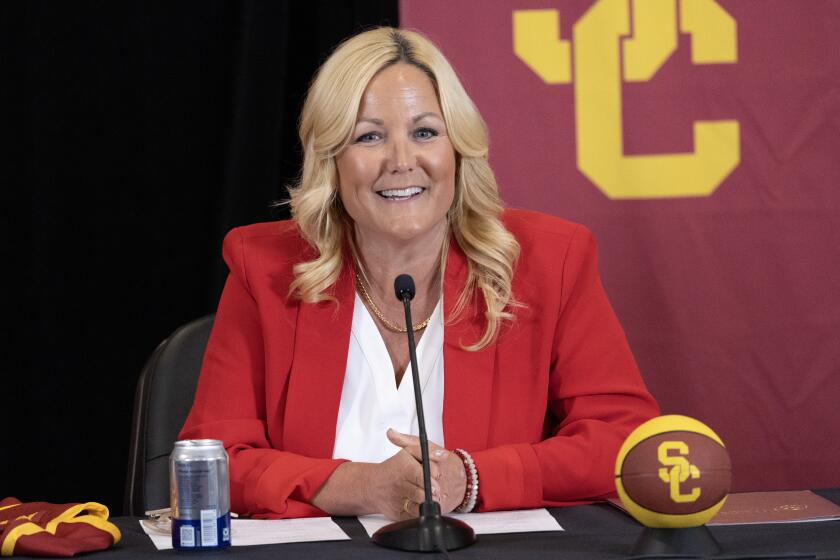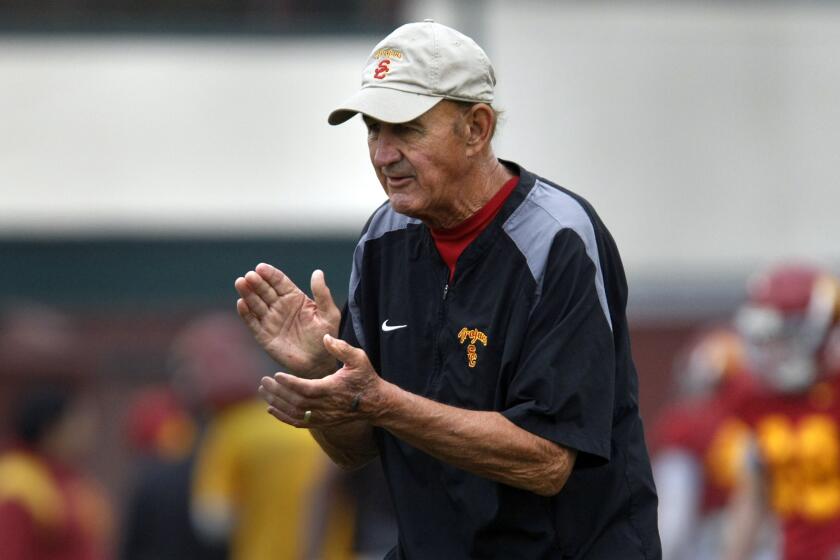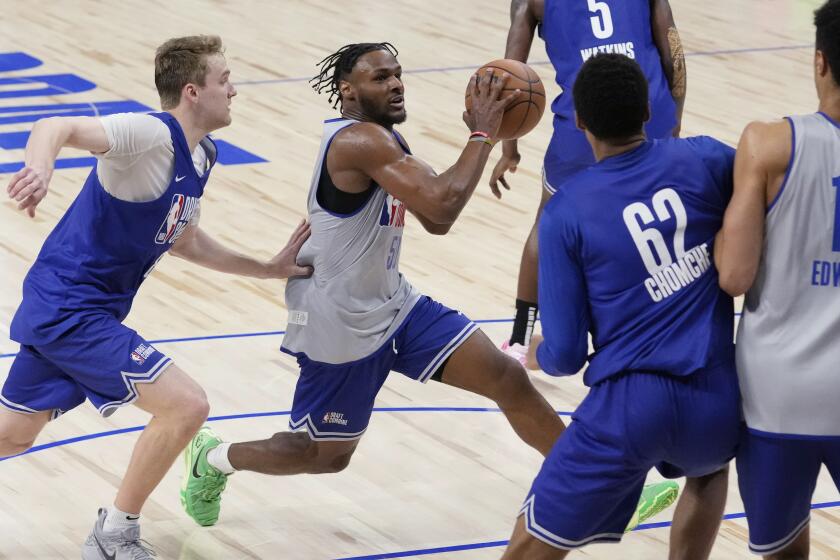Regional Bias in the NCAA Brackets?
Coaches on the West Coast have long maintained that there is a bias against their teams when it comes to the postseason. Perhaps it is because USC long dominated the sport and other local teams have regularly reached the College World Series, sometimes playing each other to determine a championship.
Whether there is any truth to that perception is open to debate. But the decisions made by the NCAA baseball committee in determining this year’s 64-team tournament have fueled the argument.
Stanford will play host to one of the toughest regionals ever. Included in that four-team bracket are the Cardinal, Cal State Fullerton, Long Beach State and San Jose State. The Cardinal has been in the top 10 all season. Big West Conference rivals Fullerton and Long Beach have been in and out of the top 25. San Jose State has won a school-record 45 games.
Other regionals are clearly inferior. Baseball committee chairman Wally Groff admitted as much, explaining that the committee operated under an NCAA executive committee mandate to make selections based on geography to minimize air travel after the Sept. 11 attacks.
“When you look at some of the brackets, it doesn’t make sense,” Groff said. “The weight of some brackets compared to others ... it definitely was different from what we’ve done in the past. From that perspective, it’s definitely harder.”
The biggest problem isn’t the four-team regionals, because most coaches expected the NCAA to match up teams in close proximity. The biggest source of controversy is the way the fields for the best-of-three super-regionals were determined.
The winners of the two California regionals will play each other in the next round. Of West Coast teams, only Washington and Arizona State were put in other regionals, and neither is seeded first. Thus it is possible that only one team from west of the Rocky Mountains will be among the eight that go to Omaha. And that scenario troubles Stanford Coach Mark Marquess.
“Last year, USC, Fullerton and Stanford got to Omaha,” he said. “Now this year, that cannot possibly happen. When you do that, it compromises your national championship.”
Meanwhile, two regionals that contain teams from Florida will not send their winners to the same super-regional. Granted, eight teams are seeded nationally and Stanford, the eighth-seeded team, is in the same bracket as top-seeded Florida State.
But the four teams in the regional hosted by USC--in which the Pacific 10 champion Trojans and Big West champion Cal State Northridge are seeded 1-2--should have been placed in another eight-team bracket. Instead, two West Coast teams, the winners of the USC and Stanford regionals, will meet in the same super-regional.
USC Coach Mike Gillespie worries that some teams that reach Omaha this year will be less than deserving.
“When all the dust clears, there are going to be some pretty good teams staying at home,” he said.
Fullerton Coach George Horton was more blunt. “Maybe they’re trying to assure new blood in the finals,” he said. “I don’t think the committee is trying to get the top eight teams in Omaha.”
Marquess, whose team has hosted regionals the last eight years, said it may be better for a team not to host if the selections in the future are done under the same criteria. He cited many teams from the West that have been sent to regionals in other parts of the country and have advanced to the College World Series.
“Why would you host if your goal is to win a national championship?” he said. “There would need to be changes. You would hope there will be enough flexibility in the brackets in later years. There’s no way you should have two schools in the same conference play in the same region.”
Marquess said the Sept. 11 tragedy is not a valid excuse and that the NCAA may be trying to maximize its revenue generated from the College World Series.
“We’ve been traveling all year,” he said. “If it was such a concern, wouldn’t you think athletic directors across the country wouldn’t have allowed their schools to travel? We made $1 million last year. As long as you’re making money, you would think they could send more teams out to balance the brackets like they do in basketball.”
Go beyond the scoreboard
Get the latest on L.A.'s teams in the daily Sports Report newsletter.
You may occasionally receive promotional content from the Los Angeles Times.



